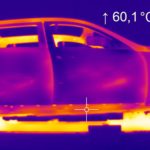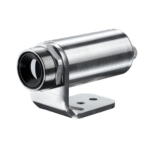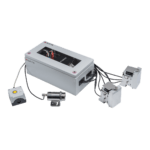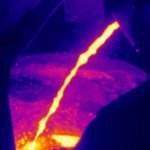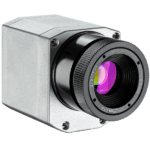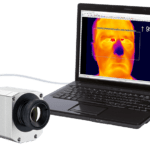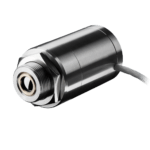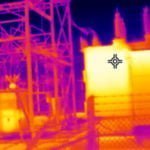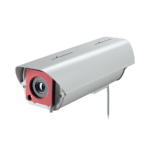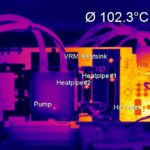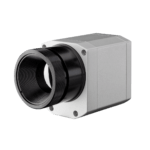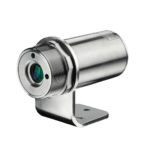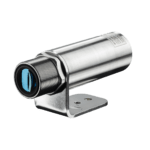Optics
At the beginning of the measuring chain, there is an optical system, which usually consists of an optical lens. It receives the infrared radiation emitted by a measured surface and focuses it on a detector.
Measuring Distance and Measuring Field
The optics of infrared thermometers are usually described by the ratio of the measuring distance to the measured surface diameter (E:M or D:S). The distance ratio describes how large the measured surface is at a given distance. In order to avoid a falsification of the measurement result, the measurement object should be greater than or equal to the field of view of the sensor.
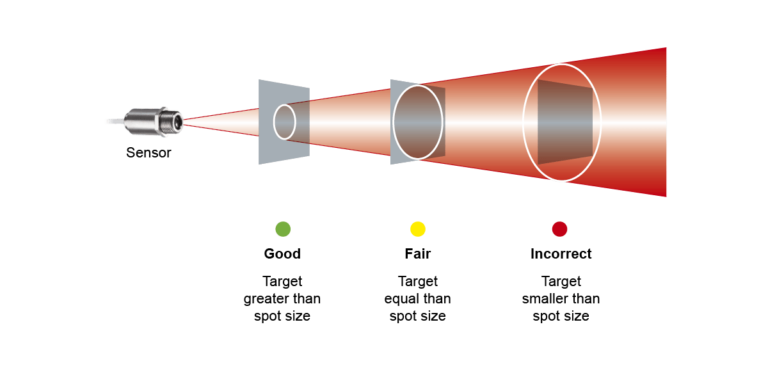
If the measurement object occupies only part of the measured surface, temperature increases are only displayed as an average value between the hot and cold area portions. If, for example, an electrical connection has a higher ohmic resistance due to a corroded contact and therefore heats up in an inadmissible manner, this is only shown as a slight warming for small objects and large measurement surfaces, so that potentially dangerous situations cannot be detected.
Lens and Window Materials
Due to the dependence of the transmission behavior on the wavelength, the lens and window materials can only be used for certain wavelength ranges. The following figures show the wavelength ranges as well as the transmission of typical lenses and window materials for infrared thermometers.
For some measurements, such as in closed reaction vessels, ovens or vacuum chambers, it is usually necessary to measure through a suitable measuring window. The transmission values of the window should be adjusted to the spectral sensitivity of the sensor when selecting a window material. Quartz glass (SiO2) is suitable for use at high measurement temperatures; at low temperatures and wavelengths in the range of 8 to 14 microns special infrared-permeable materials such as germanium (Ge), silicon (Si) or zinc sulfide (ZnS) are to be used.
When selecting the window, the temperature resistance, pressure resistance, chemical resistance and diameter of the window material should also be considered. For a window with 25 mm diameter, which is to withstand a pressure difference of one atmosphere, a thickness of 1.7 mm is for example sufficient. For aligning the sensor to the measurement object (e.g. in the vacuum container), it may be useful to use window materials that are also transparent in the visible range.
Windows with antireflection coatings have much higher transmission (up to 95 percent). The transmission loss can be corrected with the transmission setting on the device if the manufacturer has specified the transmission for the corresponding wavelength range. Otherwise, it can be determined experimentally with the infrared thermometer used and a reference emitter.
Share article
Contact for Advice and Sales Worldwide
We offer comprehensive advice for your individual applications
Our experienced application engineers ensure competent and reliable customer service in the field. In addition, Optris works closely with numerous distribution partners worldwide.
International
Ferdinand-Buisson-Str. 14
13127 Berlin, Germany
Phone: +49 30 500 197-0
E-Mail: sales@optris.com
Internet: www.optris.com
Managing Director:
Dr.-Ing. Ulrich Kienitz

